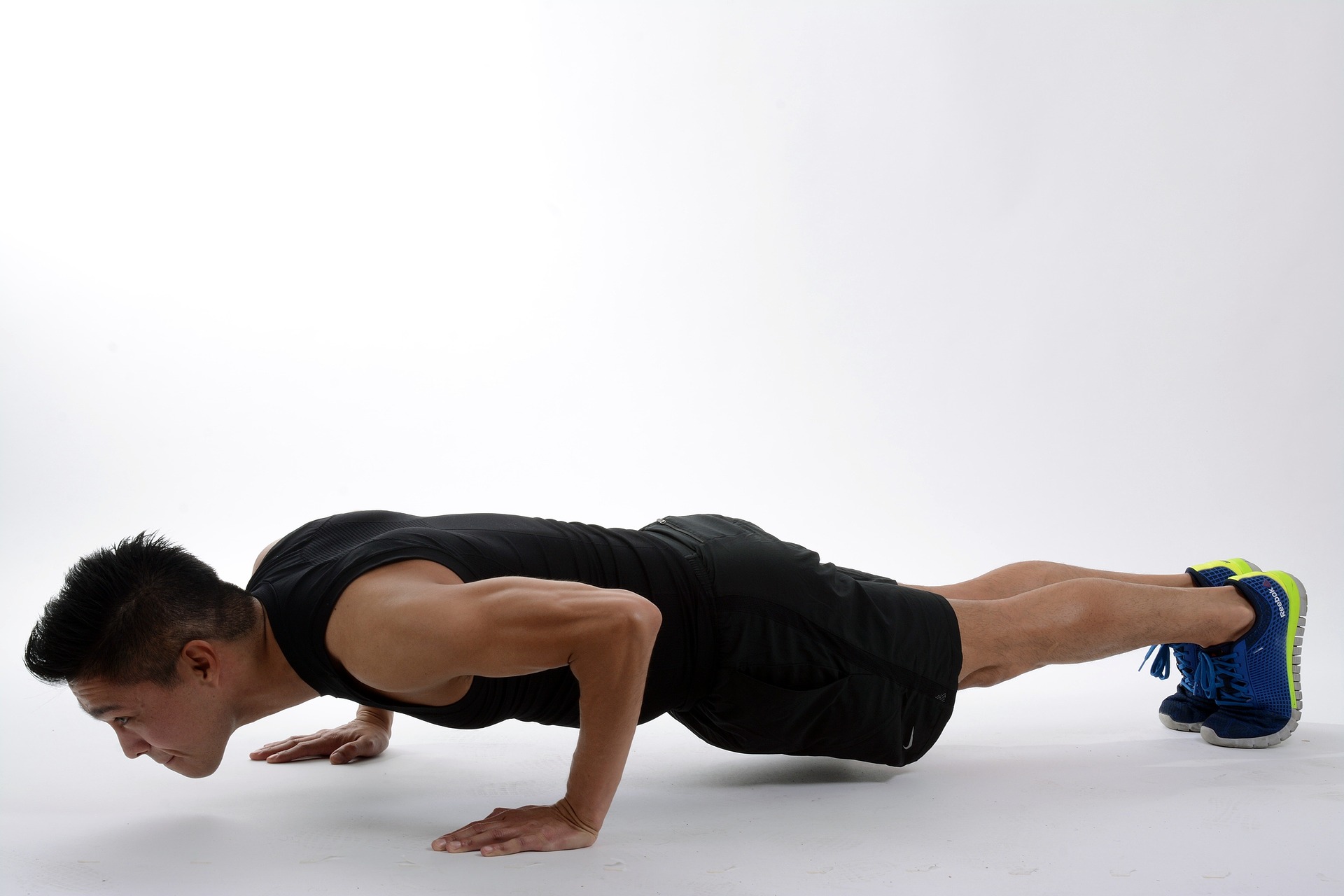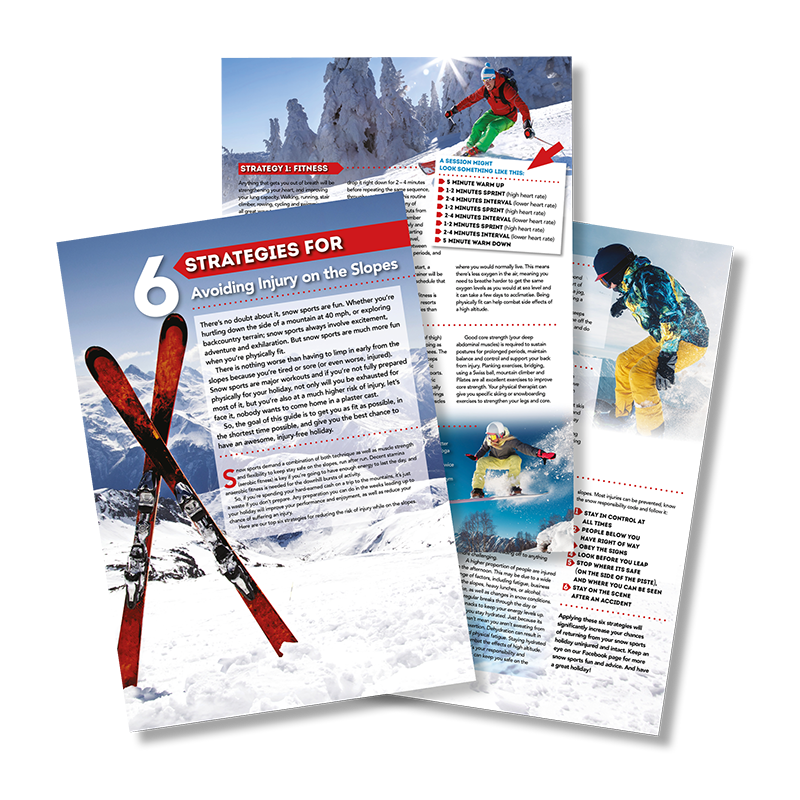Strategies for Avoiding Injury on the Slopes
Posted on 2nd February 2020 at 20:53
Shred the Slopes Not Your Body
Are you planning or have already booked a trip to the slopes? If so, are you prepared? We are not referring to your purchase of the latest ‘look’ to cruise the slopes in style or sussing out the best Apres ski spots. We are referring to you – your body, is it prepared and ready to take on the physical demands of skiing or snowboarding to return home without a plaster or crutches? Alpine skiing and snowboarding are classified as extreme sports due to the involvement of high speeds and an increased propensity for participants to jump and perform acrobatic maneuvers (as seen on TV, seemingly easy, yet another story when you the amateur attempt them). There is an increasing involvement in these winter sports, with nearly 1 million people from the UK skiing or boarding annually.
There are risks involved when participating in snow sports. Alpine skiing and snowboarding take place in environments where medical care may not be readily available on site. Because of these challenges, greater emphasis needs to be placed on skill, preparation, and safety strategies/equipment to prevent serious injury. We would hope the only time you ride in the helicopter is for a scenic flip or heli-ski, and not a rescue off the mountain to the local hospital! Before travelling check your medical insurance includes extreme sports, you may need to purchase extra cover for your holiday.

In both skiing and snowboarding, the leading cause of death and catastrophic injury is traumatic brain injury (TBI). Head injuries and concussions account for 25% to 30% of injuries. Musculoskeletal injuries are far more common, albeit less serious. When skiing you are at greater risk of sustaining an injury to your lower limb; most commonly knee injuries like tearing the ACL (anterior cruciate ligament) or sprains and tears to the collateral ligaments, the ligament on each side of the knee. Snowboarders on the other hand sustain most injuries to their upper limb; frequently sprains or fractures to the hand and wrist or shoulder dislocations.
But it’s not all doom and gloom. Wearing a helmet and being physically prepared for your trip can significantly reduce your risk of injury. There are also many benefits to a skiing holiday, not only is it fun and being outdoors enjoying the beauty of your natural surroundings is good for your soul and mental outlook. But undoubtedly the physical exertion is great exercise for your musculoskeletal and cardiovascular systems. These tips can help make your winter wonderland wicked rather than weary and wounded!

Why not start your holiday in pristine condition If you know you have a knee or back niggle visit your physiotherapist for some hands-on treatments to relieve pain and stretch out tight structures, so you can enjoy your trip without any flare-ups. Strengthening exercises for your knees and quadriceps muscles (thigh muscles) is well advised; the stronger they are, the better they can absorb the impacts of skiing and snowboarding without injury. Yoga, Pilates for core strengthening will also protect your back and improve your balance which may save you from a fall and subsequent injury. Why not enquire about joining one of our Pilates classes, or have a 121 session? In addition to this being physically fit will make your skiing better and more enjoyable. Injuries often occur later in the day when fatigue sets in and concentration levels lag. The fitter you are the longer you will be able to stay out on the slopes without increasing your injury risk. All this physical preparation for the trip may result in some muscle aches and stiffness, some treatment, or a few massages prior to leaving will ensure you are ready to take on the slopes. Speak to our physiotherapists or book a session with Tanya, our sports massage therapist.
Fortunately, most snow sport injuries can be treated with rest, bracing, pain medication and physiotherapy. Some more severe fractures and ligament tears may require surgical intervention where recovery periods can vary from 3 to 6 months and necessitate intensive rehabilitation. Massage is often a key component to treatment. It promotes circulation and tissue healing and mobilises and stretches tight structures. On returning from your trip, you may have some minor aches and stiffness from all the exertion; don’t leave that to try and recover on its own. Early treatment of an injury guarantees better long-term outcomes. Chronic pain is a serious condition that can become complex and frustratingly stubborn to manage and overcome. So, book a massage when you return home and work out all those ‘moguls’ in your body.
We’ve put together a guide called “6 Strategies for Avoiding Injury on the Slopes” and it’s accompanied by two leaflets with videos, containing six power exercises for either snowboarding or skiing. To download the leaflet click here http://bit.ly/2Uhxxtd
A skiing holiday is great fun, and these risks shouldn’t deter you from going and enjoying your time. Use these tips to get better prepared and stay injury free

Share this post:




